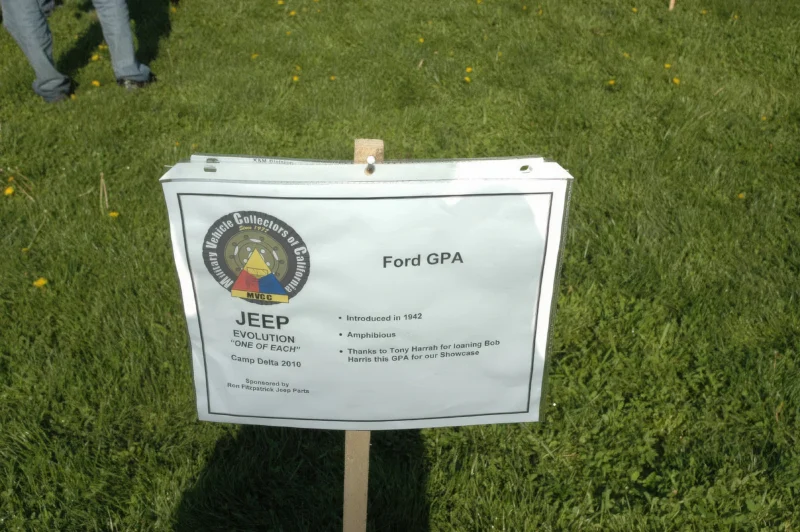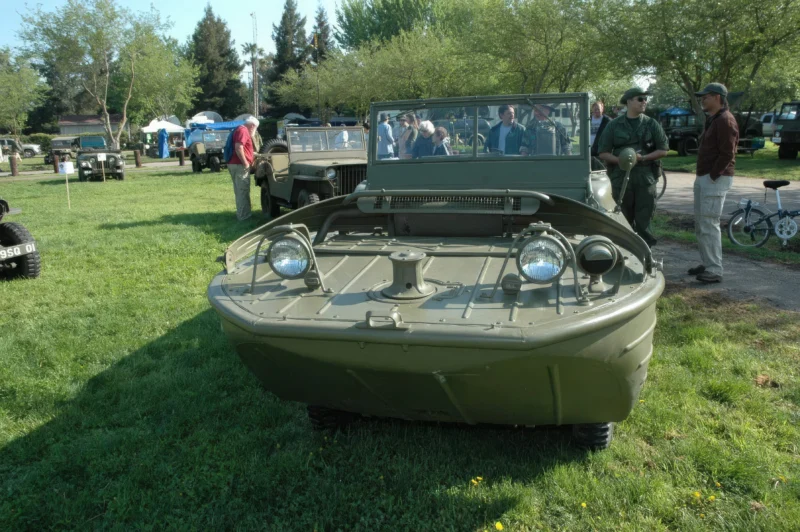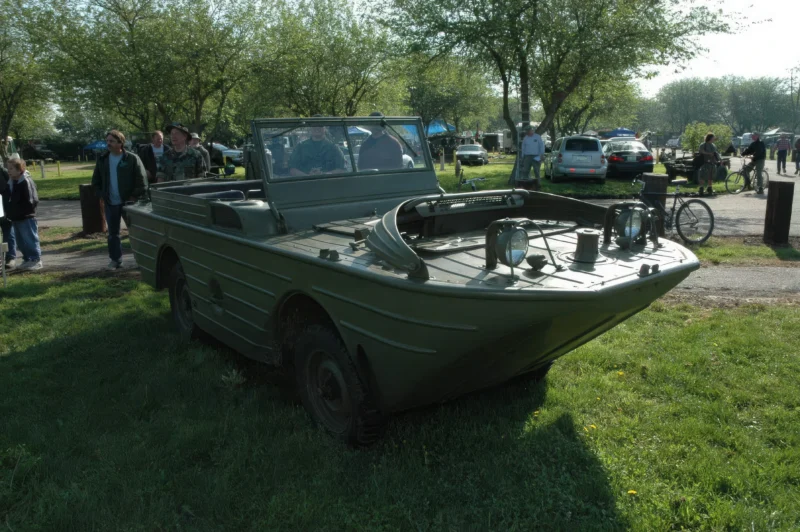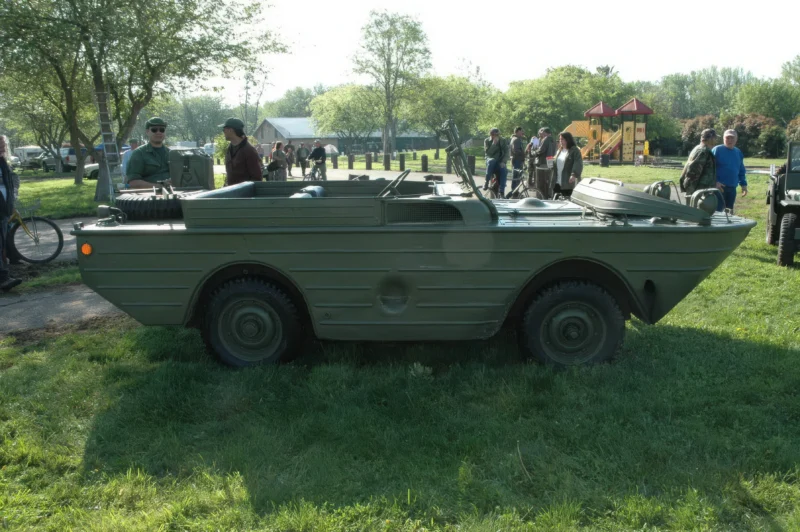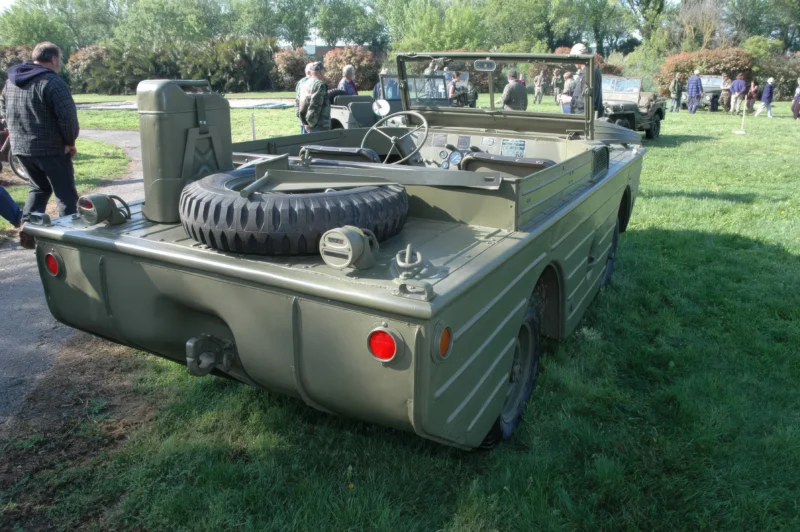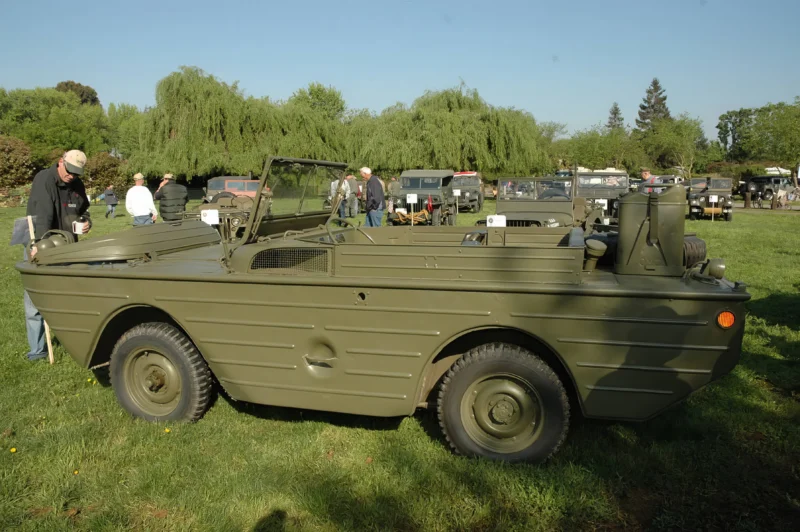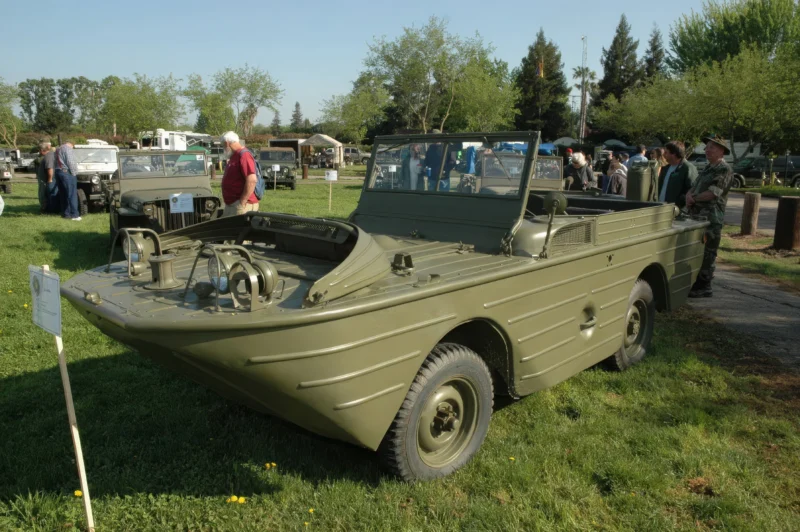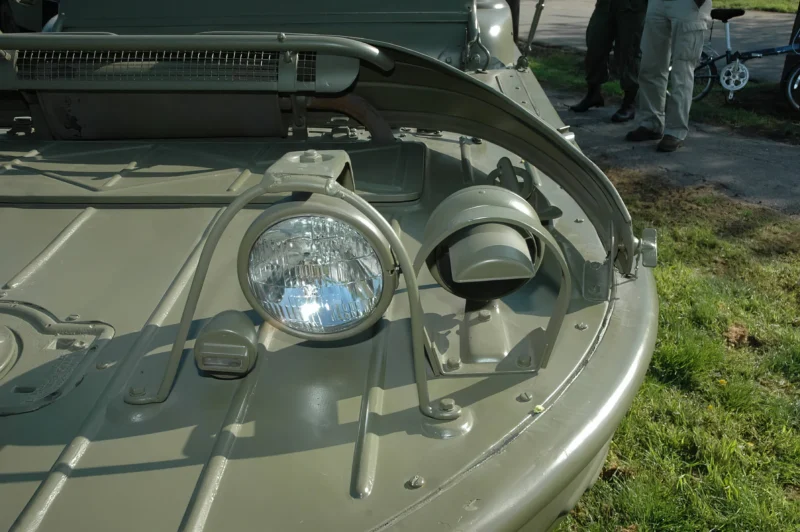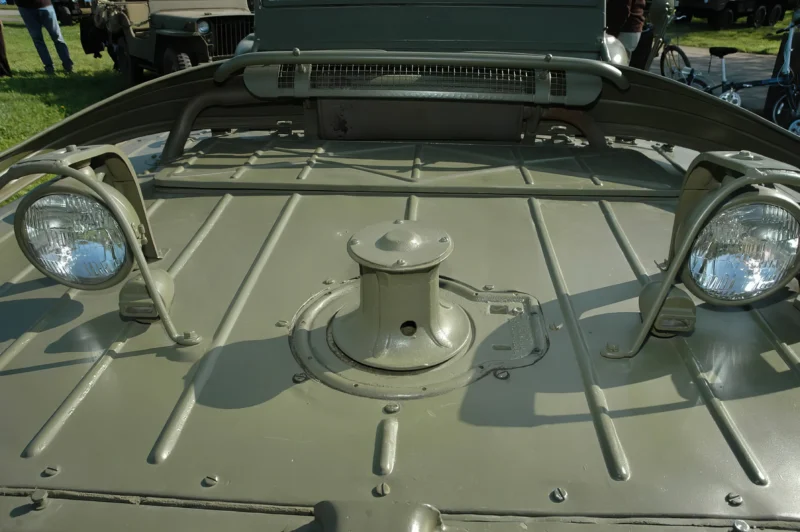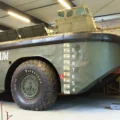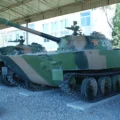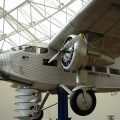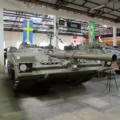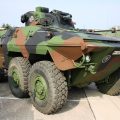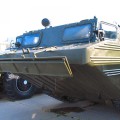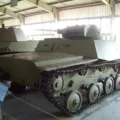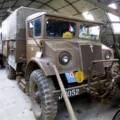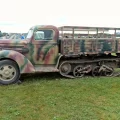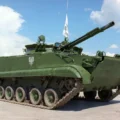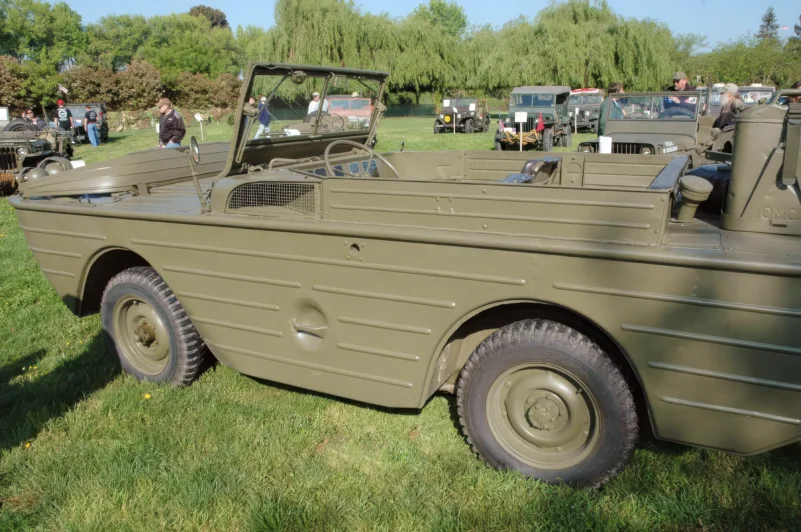
Ford GPA | |
|---|---|
| Country | USA |
| Type | Amphibious jeep |
Photo gallery of a Ford GPA, The Ford GPA ‘Seep’ (from Seagoing Jeep), was an amphibious version of the WWII Ford GPW Jeep. Unlike the jeep, the seep was not a successful design being too slow and heavy on land and lacking sufficient seagoing abilities in open water. Similar design features were used in the larger and more successful DUKW amphibious truck.
| GPA Walk Around | |
|---|---|
| Photographer | Unknow |
| Localisation | Unknow |
| Photos | 48 |
| GPA Walk Around | |
|---|---|
| Photographer | Michael Benolkin |
| Localisation | Unknow |
| Photos | 27 |
| GPA Walk Around | |
|---|---|
| Photographer | Unknow |
| Localisation | Unknow |
| Photos | 10 |
See also:
| Jeep GPA Walk Around | |
|---|---|
| Photographer | Unknow |
| Localisation | Unknow |
| Photos | 34 |
The Ford GPA, often nicknamed the “Seep” (for “Seagoing Jeep”), was a light, four-wheel-drive amphibious vehicle produced by the United States during World War II. It was conceived as a smaller, water-capable counterpart to the standard Willys MB/Ford GPW jeep, designed to bridge the gap between transport ships and the beachhead.
Key Characteristics
- Design Basis: The GPA was mechanically based on the Ford GPW jeep, using many of the same engine and running gear components.
- Hull: Its most distinctive feature was its boat-like, welded steel hull with a rounded bow and a low profile. This sealed body allowed it to float.
- Power and Propulsion: It was powered by a four-cylinder petrol engine (60 hp). On land, it used conventional four-wheel-drive. For water travel, a propeller at the rear, driven by a power take-off (PTO), provided thrust, and a rudder controlled by the steering wheel provided direction.
- Performance: While the concept was sound, the production model was considered heavy and unwieldy. On land, it was slower and less agile than the standard jeep. In the water, its low freeboard made it susceptible to swamping in anything but the calmest conditions, limiting its usefulness in open sea operations.
- Service: Despite its limitations, over 12,000 units were produced between 1942 and 1943. Many were supplied to Allied nations, most notably the Soviet Union under the Lend-Lease program, where they were successfully used for river crossings on the Eastern Front.
The GPA’s shortcomings led the U.S. military to quickly favor the larger, more robust, and more seaworthy GMC DUKW amphibious truck for major landings.
Views : 6493
